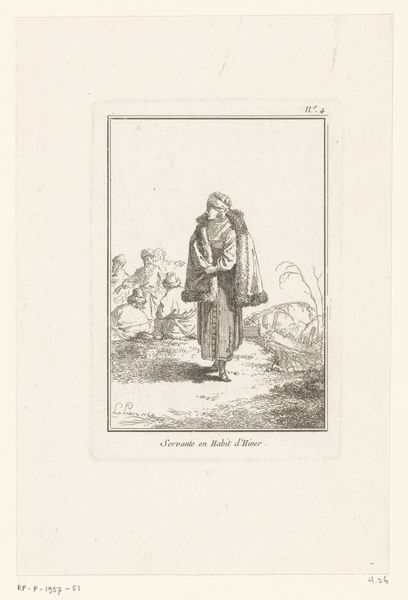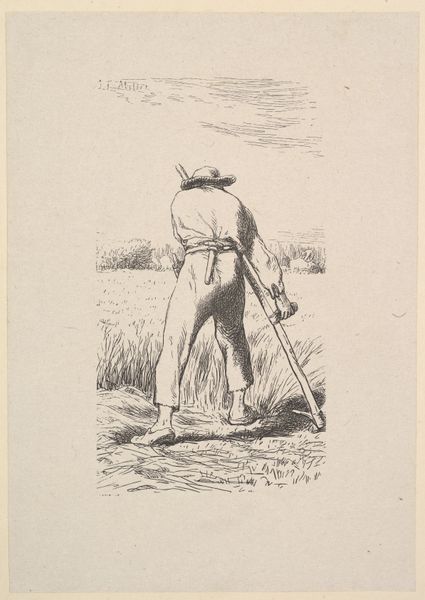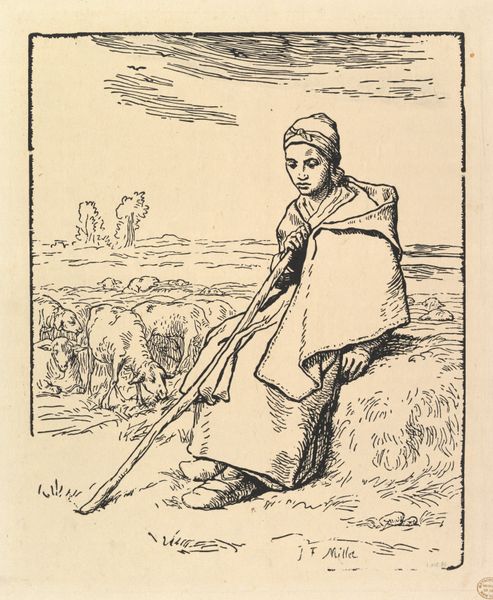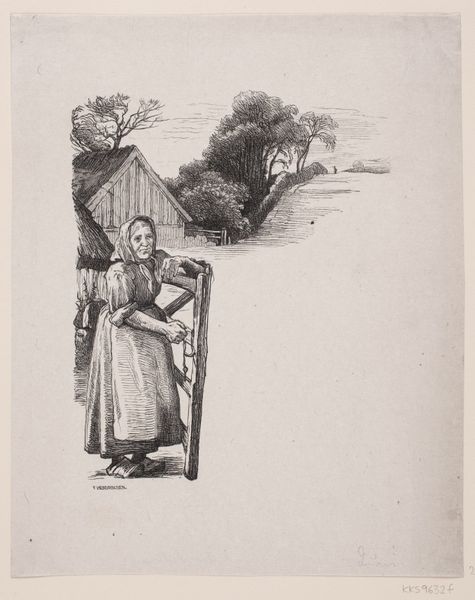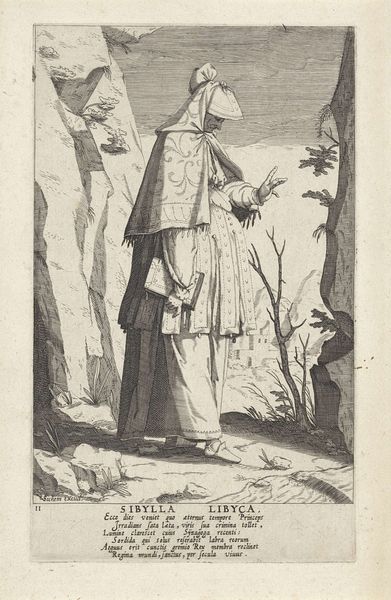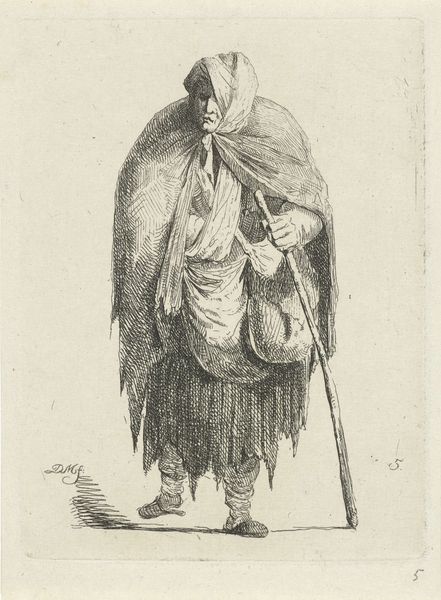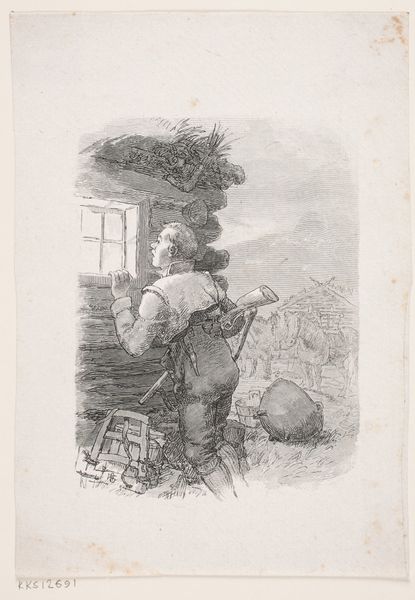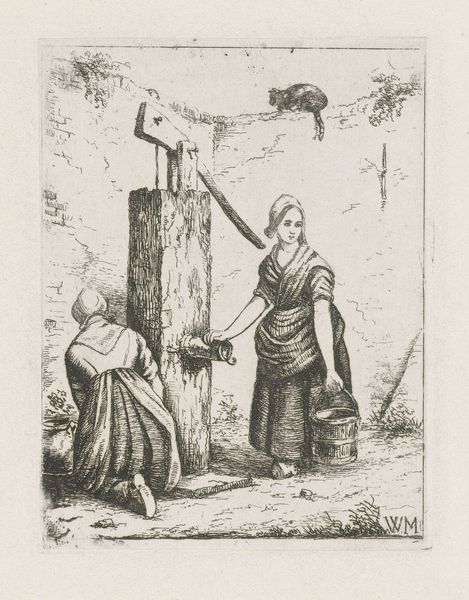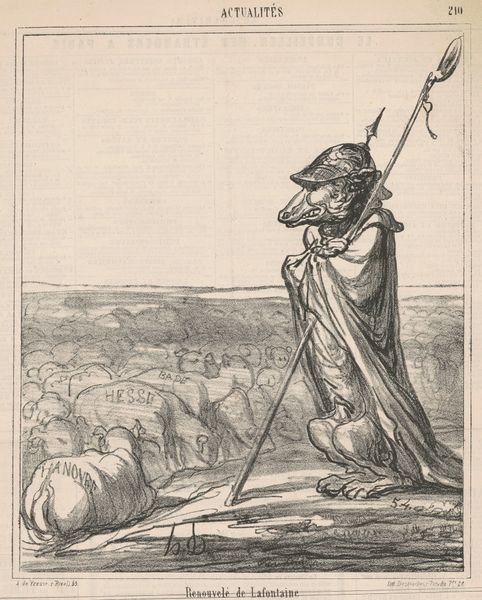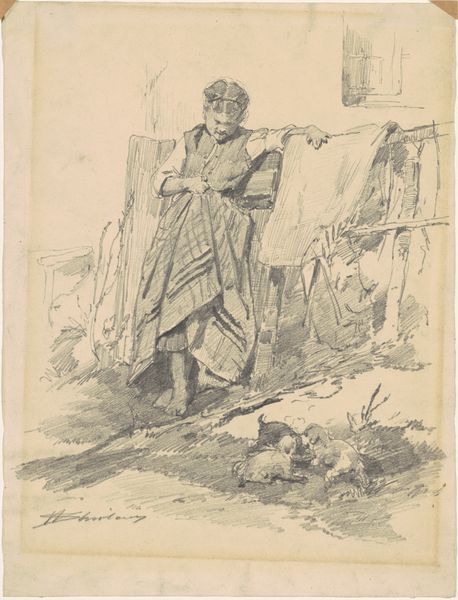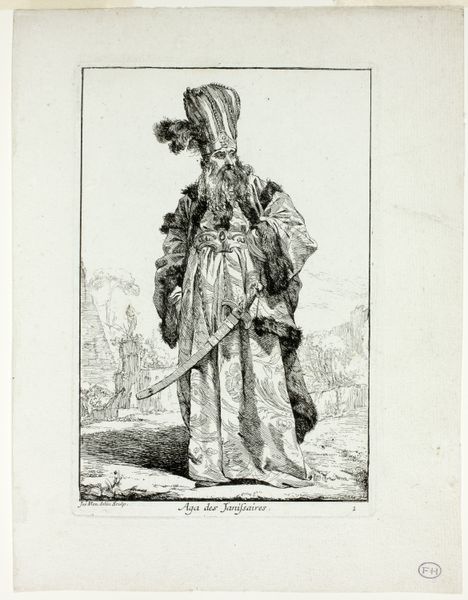
Dimensions: block: 5 5/16 x 2 15/16 in. (13.5 x 7.5 cm)
Copyright: Public Domain
Curator: This is Jean-François Millet's "The Raker," an etching from 1853. You can find it at the Metropolitan Museum of Art. What are your initial thoughts? Editor: Stark. The figure's almost monastic garb combined with the stooped posture exudes a feeling of austere labor. There's a somber quality despite its quotidian subject. Curator: The starkness is certainly part of the effect, owing much to Millet’s deliberate compositional choices. Note how the artist utilizes linear perspective to push our eye from the raker, grounded and hunched at center, into an atmospheric zone towards the background and the implied cloud line. Semiotically, we can view the tool as a synecdoche for a life centered on field work. Editor: And that tool – it seems like more than a tool. The staff, held almost as if it were a weapon, evokes ritual and the endless cyclical nature of agricultural labor. The covered head almost hides identity—making this about *all* rakers across history. Curator: That connects to wider concerns of Millet and others who portrayed rural life outside established History Painting. They aimed to present ordinary subjects elevated within formal concerns. Look at how the light renders the textures of clothing and hay, using the limited palette of the medium to achieve incredible form. Editor: Right, the symbolism isn’t isolated. The figure and their burden are also linked to a larger mythic labor of tilling and cultivating a harvest. In this case the shrouded appearance suggests the historical plight and social standing of the working poor. Curator: Well said, yes! It seems he is bringing form and message into union through stark realism and understated presentation. It’s a balance between direct observation of light and labor and larger allegorical suggestion. Editor: Ultimately, the work achieves its profound impact through simple shapes—making every viewer contemplate, through his or her own cultural inheritance, the dignity of those who work to feed us. Curator: An astute and moving interpretation, Editor. It provides an eloquent culmination to our examination. Editor: Thank you!
Comments
No comments
Be the first to comment and join the conversation on the ultimate creative platform.
